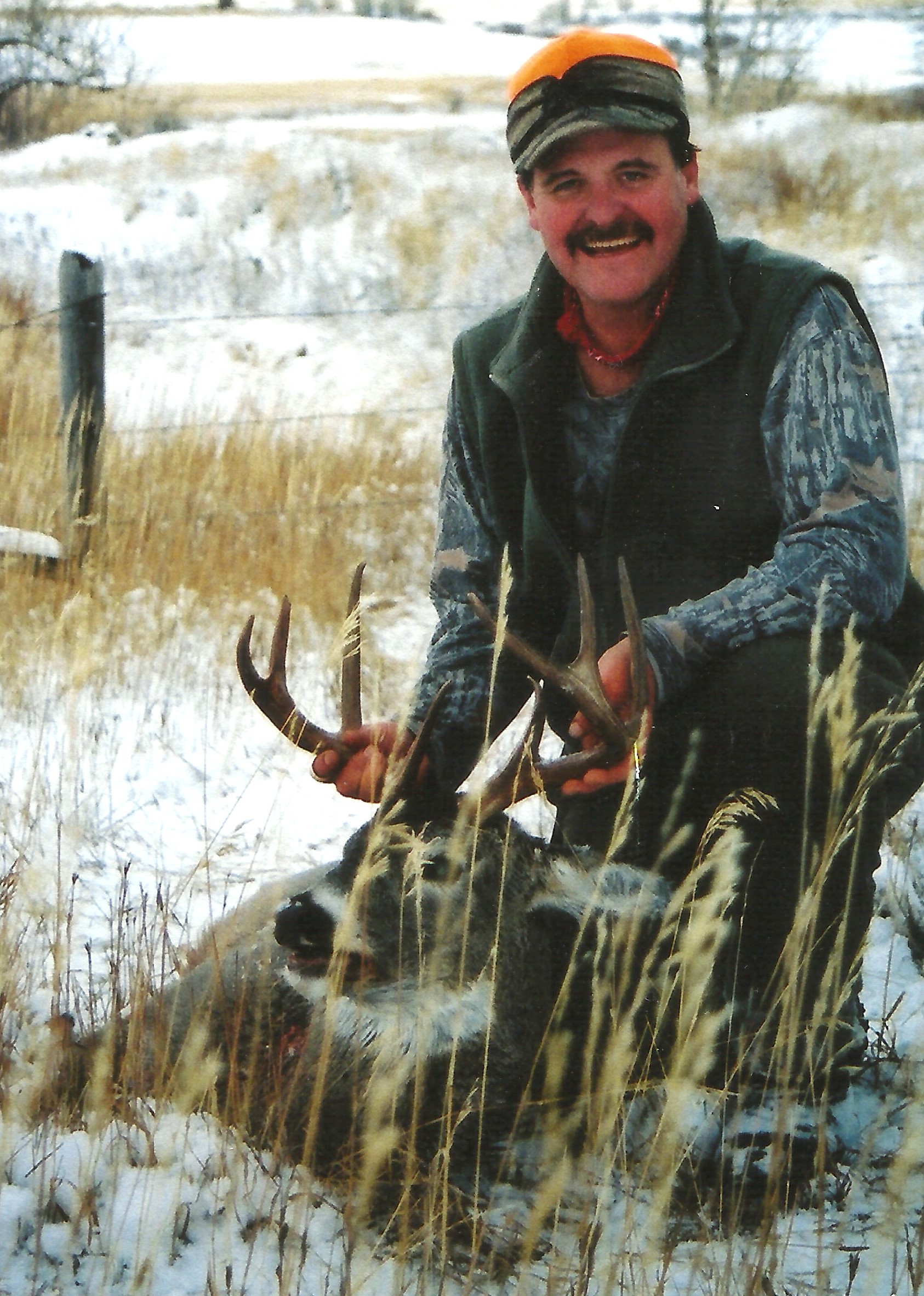If your hunting goal is to harvest a BIG BUCK, you need to hunt and scout year around. Scouting and preparation are essential for success. Hunt early and stay late when you hunt.
 Hunters evolve as their experience and skill levels improve. For years, I passed up bow shots at does so I could tag a buck. One of bow hunting Mentors told me to also learn how to harvest a deer. Does are great meat and in some ways are tougher to hunt than bucks. This initial success builds confidence and grows experience.
Hunters evolve as their experience and skill levels improve. For years, I passed up bow shots at does so I could tag a buck. One of bow hunting Mentors told me to also learn how to harvest a deer. Does are great meat and in some ways are tougher to hunt than bucks. This initial success builds confidence and grows experience.
After filling a few tags with does, the bucks will come. Over a course of a lifetime, you will tag your trophies. Every legal and ethically harvested deer is a true trophy.
Once you develop the hunting skills needed to harvest a BIG BUCK, you start to think differently. Deer hunting Science shows that BIG BUCKS get BIG by living where hunters aren’t. Research also shows that many BIG BUCKS are nocturnal and move primarily at night. This means that you need to pay close attention to the rut, falling barometric pressure, weather and other factors. These conditions may be the only weak spots that the BIG BUCKS have.
This does not mean that you should avoid hunting Public Land. Think more about habitat and behavior. Most Public Land hunters stay within a few hundred yards of a road or access point. Not all hunters are created equal and tend to rely more on Luck than Skill. Physical demands also restrict where some hunters are comfortable.
Great Habitat produces BIG BUCKS. Look for the places, in your hunting areas, that offer security and cover. BIG BUCKS will quickly move into these areas once any amount of pressure begins. Keep in mind that you are a guest in the BIG BUCKS living room. They survive in their home range for years while you venture into this space a few times each season.
These Core Areas can be as small as a few acres in an Urban forest. In a more open area, these zones tend to be around 60 acres. Think about what a BIG BUCK needs; water, protection from the weather, companionship and food. In large habitats, you can narrow down these Hot Spots, or “Deer Caves”, with good scouting and topographic maps. Suddenly, huge areas can be scaled down into smaller and predictable BIG BUCK Habitat.
BIG BUCKS are survivors that have learned through experience. They do routinely move at dawn and dusk despite moon phases, barometric pressure, and weather. Science does not support that BIG BUCKS are just Nocturnal. The important consideration is where the deer are moving. They have to eat and interact with other deer. Hunters just need to be in the right place.
Most BIG BUCK movement is limited to less than a thousand yards per day! If you are where the BIG BUCKS are moving, then hunting can be successful. Research tells us that between 11:00am and 2:00 pm, BIG BUCKS move less than 50 yards. From 6:00am-8:00am these same deer move 300-400 yards. Later in the day between 5:00 and 7:00 pm, these BIG BUCKS move even more. These experienced deer do adapt quickly to hunting activity. You may get only one chance to score so make sure you have your hunting skills tuned in. You want to hunt these Sanctuaries where the BIG BUCKS feel comfortable and remain active.
Just because you have located a BIG BUCK doesn’t mean that a filled tag is guaranteed. The best hunters make mistakes and learn from them. It is called “Hunting” not killing. This means that we are constantly learning how to hunt. Great hunters are Students of the Sport! If you do your homework, the rest will fall into place. Always remember that the process of hunting is the true measure of success. We are born with only so many Hunting Seasons in our lives, so enjoy them all while they last.
Hunt Safely,
Montana Grant

(Photo courtesy and article via Montana Grant)